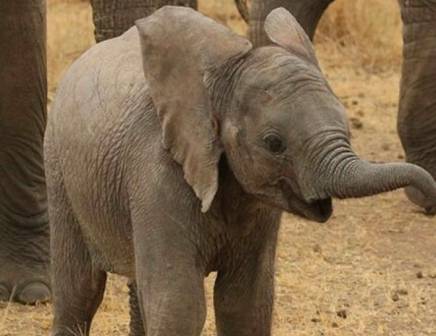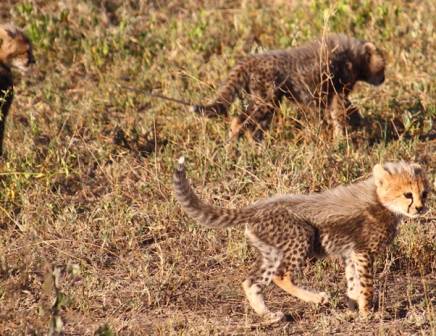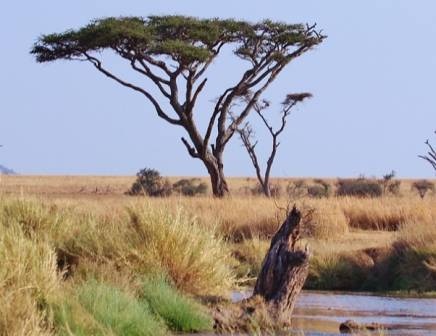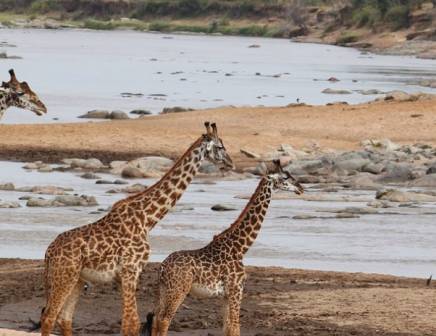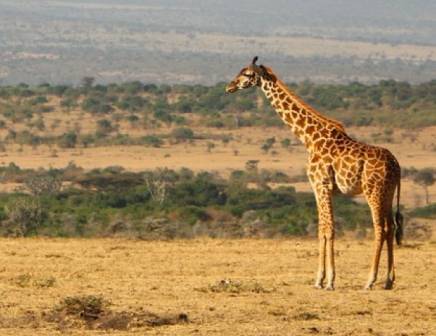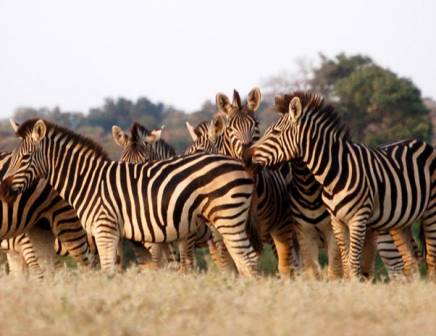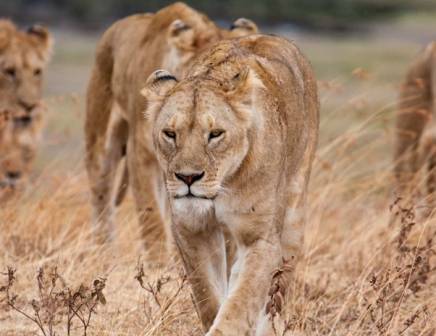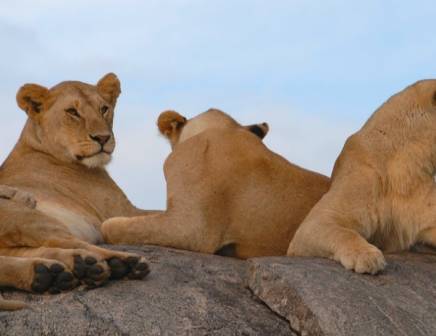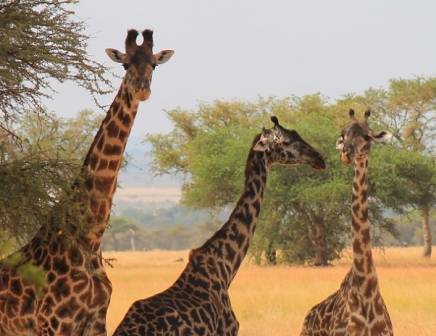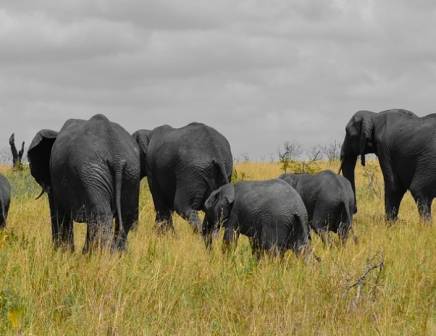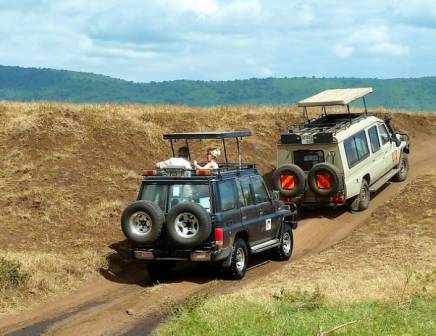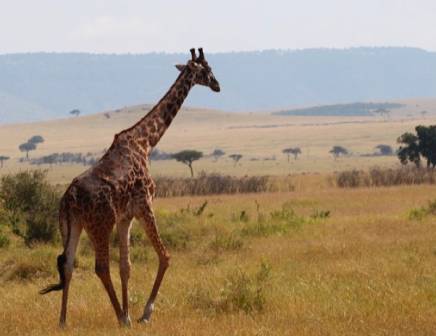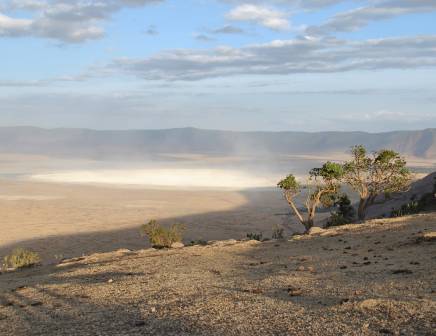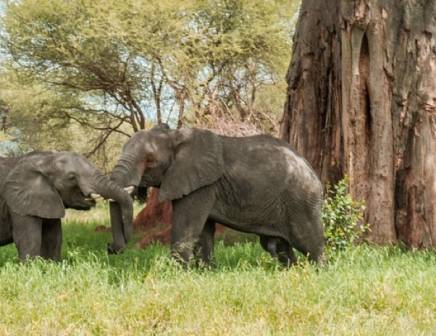
When to visit Tanzania
Travellers interested in the safari experience of a lifetime, rejoice: Tanzania, one of the best places for an African safari, is a year-round destination. However, depending on what travellers would like to see on their trip, they should consider their month of travel carefully. Read on to discover the best time to visit Tanzania!
See all Tanzania toursBest month to visit Tanzania

January is the best time to see newborn babies in Serengeti National Park, especially wildebeest. January is the beginning of the "short dry season," and travellers should expect daily temperatures to reach around 30°C (86°F).
See tours
Continuing the "short dry season," February is also a great time to see newborn babies in Serengeti National Park. The north of Tanzania is more likely to be dry than the south, where the rains may be continuing from the wet season. Daily high temperatures will reach roughly 30°C (86°F).
See tours
March brings with it the beginning of the long rainy season - during this time, expect very high humidity and greater cloud coverage. March is also the low season in Tanzania, so, while traveller should expect daily rainfall, there should be considerably fewer tourists and lower prices. The average high temperature in March will be 30°C (86°F).
See tours
Another wet and rainy season, April is one of the best months for budget travellers to visit Tanzania. Not only is April the cheapest month to fly to Tanzania, but hotels and lodges will also often offer discounts during this low season. As with March, humidity levels will be very high during this time, and daily high temperatures will reach about 28°C (82°F).
See tours
While May is still considered the down season, levels of rain tend to fluctuate in this month. The one exception to this tends to be Zanzibar, which sees more rain in this month than any other area in Tanzania. Prices remain lower for this month, so May is also a great option for budget travellers unafraid of the rain. Daily high temperatures average 27°C (80°F).
See tours
For travellers looking to do a little bit of everything in Tanzania, June is possibly the best month to visit. The beginning of the dry season, travellers will enjoy the sunshine, fresh blooms, and incredible animal sightings. This is also a great time for a beach holiday in the area. Daytime temperatures tend to range from 25-30°C (77-86° F).
See tours
July is the dryest month in Tanzania, which makes it perfect for beach holidays, wildlife sightings, and family vacations - the dry weather lowers the risk of malaria. July is the last month the wildebeest and zebra will be found in Serengeti National Park, before beginning their migration to Kenya. Temperatures will reach a daily maximum of 26°C (79°F), and this is a great month for a camping safari.
See tours
August is a great month to visit for wildlife viewing since the dry season is in full swing and foliage becomes sparse. This month is also perfect for a beach holiday, as conditions will be warm but not too hot. Families, campers, and wildlife enthusiasts celebrate: this is your perfect month. Temperatures will average 25°C (77°F).
See tours
Another dry season with low humidity, September is one of the best times to visit Tanzania for wildlife experiences, as the wildebeest and zebra will have begun their migration back to Serengeti National Park. September is also a great month for diving and snorkelling, as sea visibility is better during this time. Daily temperatures will reach about 28°C (82°F).
See tours
Things begin to warm up again in October, but with that comes the beginnings of the wet season. While travellers certainly shouldn't expect the levels of rain the wet season will bring, they may experience bouts of rain throughout the day. This is a great time to visit Tanzania for beach holidays and wildlife spotting, and temperatures will reach highs of about 30°C (86°F).
See tours
The beginning of the short rains, November sees the end of the Great Migration and, subsequently, some great game viewing opportunities. Instead, this is a great time for budget travellers to visit, as there are far fewer crowds and prices are lower. There are still some amazing chances to spot animals on safari in November. Humidity sits at an average of 76% every day in November, so be prepared to sweat!
See tours
While December is technically part of the short rainy season, this generally doesn't last too far into the month - great news for the Christmas and New Year's travellers, who flock to the country for their celebrations. Expect to pay a premium to visit Tanzania in December, and to contend with crowds. December is a great time for birdwatchers, as migratory birds arrive in the country this month.
See tours
Best time for activities

Best to spot wildlife
Pro tip: While the dry season is best for land wildlife viewing, travellers more interested in Tanzania's abundant bird life should plan their visit in the wet season, from September to April.

Best to see the Great Migration

Best time to visit Tanzania and Zanzibar
Best months to visit the beaches
- July & August: July and August are the driest months in Tanzania, meaning there's a very little chance your beach holiday will be interrupted by rain!
- February & March: February and March also see comparatively little rainfall, especially in Zanzibar. Sauti za Busara, a Swahili music festival, provides the perfect soundtrack to beach holidays in February.
Pro tip: If you're heading to Tanzania for the diving, visibility will be good year-round, ranging between ten to more than 30 metres (33 to 98 feet). The water temperatures tend to stay around 25-30ºC (77-86ºF), meaning longer dives remain comfortable.
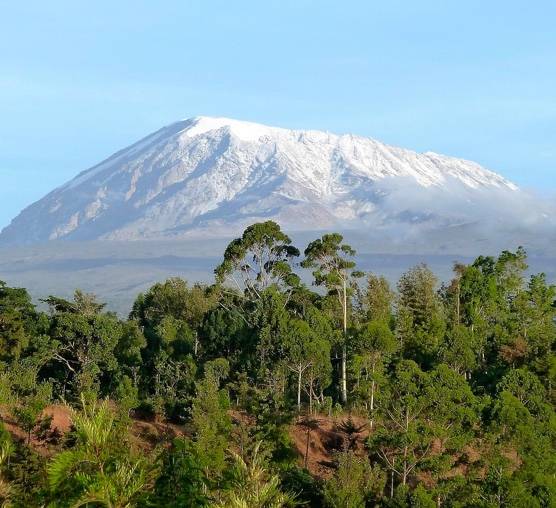
Best to climb Kilimanjaro
Best time to go on safari in Tanzania
Tanzania is definitely a year-round safari destination, but there are some differences depending where in the country you decide to visit for your safari adventure. The best places for safaris year-round are located in the north, where travellers will enjoy great wildlife viewing no matter when they visit. Consider areas such as Serengeti National Park, Ngorongoro Crater, and Tarangire National Park for a safari regardless of timing, but remember that the dry season is always prime wildlife season, and, thus, the peak season.
Climate in Tanzania

Temperatures and rainfall in Tanzania
The climate in Tanzania is changeable depending on where you visit - for example, Ngorongoro tends to be much colder than Serengeti National Park. One constant is that the coast, temperatures are warm year-round; the perfect beach destination!
Serengeti
Serengeti National Park is located in a subtropical climate. From May to August, conditions are dry and relatively cool, followed by a warmer season in September and October. When the rainy season arrives, it brings humidity with it - from November to April, expect rain and heat.
Ngorongoro
The weather in Ngorongoro is spring-like all year round, which provides welcome relief for travellers arriving from other parts of Tanzania! However, expect to see more rain in this area - the highest parts of the crater exceed 2000 metres (6500 feet), which brings with it cool nights and more precipitation.
Kilimanjaro
Kilimanjaro stands at 5895 metres (19340 feet) tall, which means parts of it are home to permanent snow. Despite this, the sun is very strong at those altitudes, so travellers should remember to bring appropriate sunscreen. Kilimanjaro sees high levels of rainfall in April and May, and, on the summit, temperatures can drop to -15 to -25°C (5 to -13°F) at night.
The coast
Conditions are hot year-round on the coast of Tanzania. However, travellers should expect two rainy seasons in the northern part of the coast. The first occurs between March to May, with April being the wettest month, and the second occurs between October to December, though the rainfall pattern of the second rainy season is irregular.
| JAN | FEB | MAR | APR | MAY | JUN | JUL | AUG | SEP | OCT | NOV | DEC | |
|---|---|---|---|---|---|---|---|---|---|---|---|---|
| High°C Day | 29° C | 29° C | 29° C | 28° C | 27° C | 27° C | 26° C | 27° C | 28° C | 29° C | 28° C | 28° C |
| Min °C Night | 16° C | 16° C | 16° C | 16° C | 16° C | 15° C | 14° C | 15° C | 15° C | 16° C | 16° C | 16° C |
| Max °F Day | 84°F | 84°F | 84°F | 82°F | 81°F | 81°F | 79°F | 81°F | 82°F | 84°F | 82°F | 82°F |
| Min °F Night | 61°F | 61°F | 61°F | 61°F | 61°F | 59°F | 57°F | 59°F | 59°F | 61°F | 61°F | 61°F |
| Chances of rain | low | low | high | high | medium | low | low | low | low | low | medium | medium |
Tanzania tour deals
Contact our Travel Experts
+1 844 311 8331
24/7 Support
Our team of experienced tour specialists have travelled to hundreds of countries around the globe and have decades of first-hand travel experience to share. Contact us now to have all of your tour-related questions answered!
